During 2007, Afghanistan experienced its most violent year since the overthrow of the Taliban regime in early 2002. Suicide attacks, improvised explosive devices, or IEDs, and small-arms attacks reached new heights in 2007. The Taliban, with its sanctuaries in the Northwestern Frontier Province and Baluchistan in Pakistan, have stepped up attacks against the Afghan military and the International Security Assistance Force in an attempt to destabilize the Afghan government and force the Western governments to withdraw.
The southern, southeastern, and eastern regions, all which border Pakistan, experience 73 percent of the Taliban-inspired violence in Afghanistan. Kunar, Kandahar, Khost, Nangarhar, and Paktia provinces, all of which border Pakistan, experience the most Taliban-driven attacks in Afghanistan. Kunar, which borders Pakistan’s Bajaur province, an al Qaeda command-and-control hub, is Afghanistan’s most dangerous province.
The charts below look at the data over the course of 2007. With special thanks to Tim Lynch and Sami Kovanen at Vigilant Strategic Services Afghanistan (VSSA), who compiled the data and created the graphics.
Click the image to enlarge the graphs.
|
Incidents by province attributed to AGE, or Anti-Government Elements (The Taliban, Al Qaeda, HIG, etc.). Click to view. |
|
|
|
Incidents by type. IED = improvised explosive devices, VBIED = vehicle-borne improvised explosive devices, SVBIED = suicide vehicle-borne improvised explosive devices, BBIED = body-borne improvised explosive device, CPX = complex attack, SAF = small-arms fire, RPG = rocket propelled grenade. Click to view. |

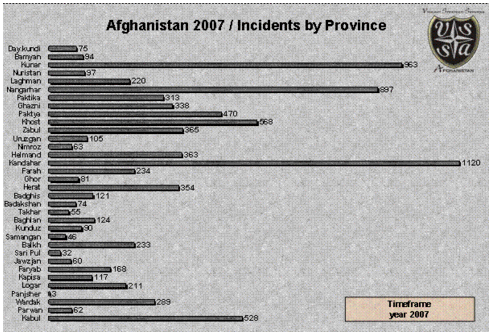
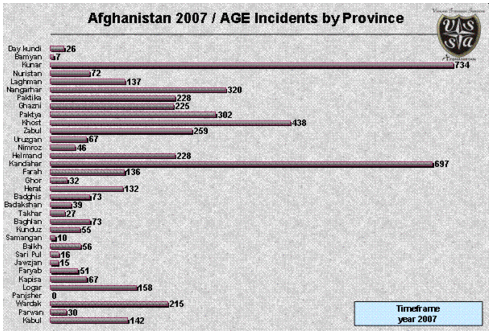
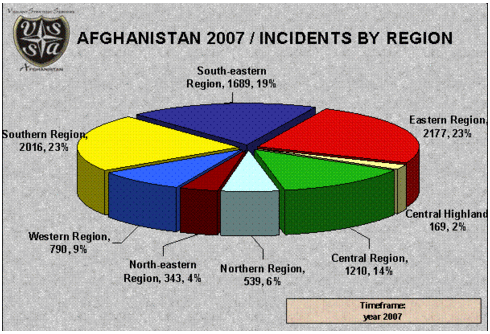
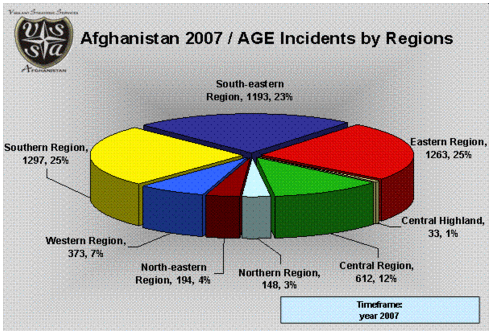
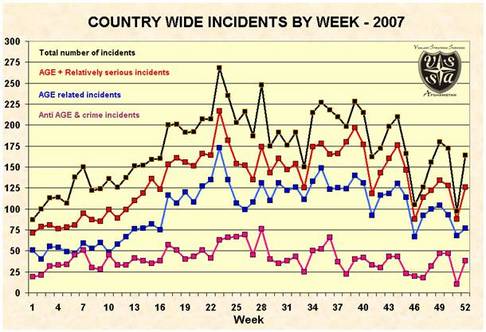
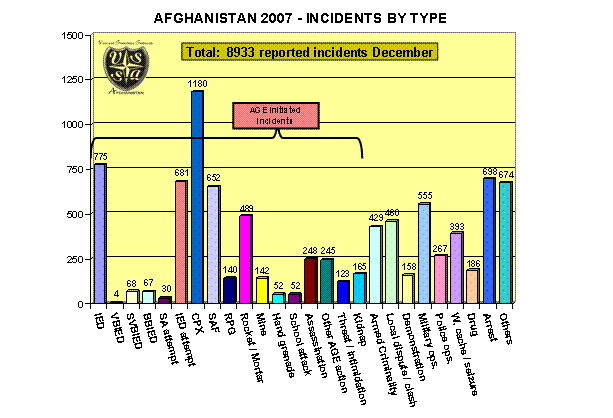
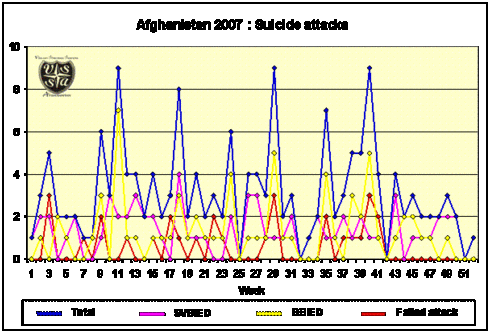
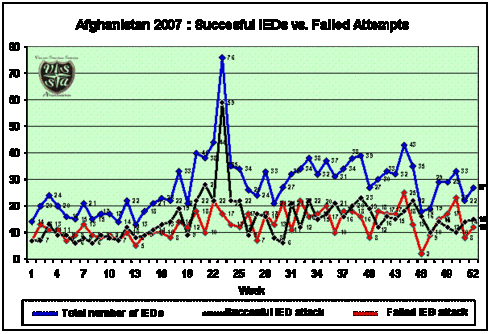
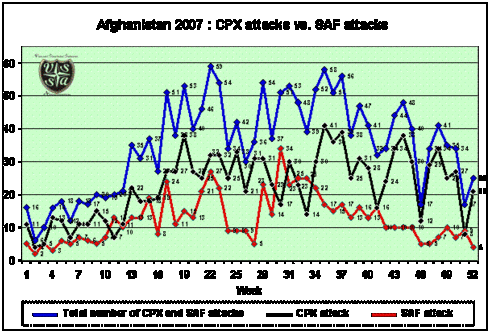







1 Comment
Afghanistan, Paksistan and even Israel
Violence in Pakistan continues to metastasize to the point where the government finally seems serious about fighting the Islamists. It is spilling over into Afghanistan somewhat too, but things are decidedly better in the poorer and more primitive coun…